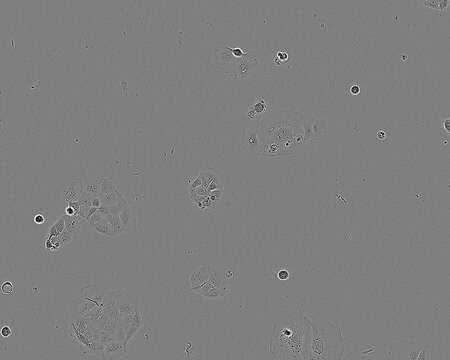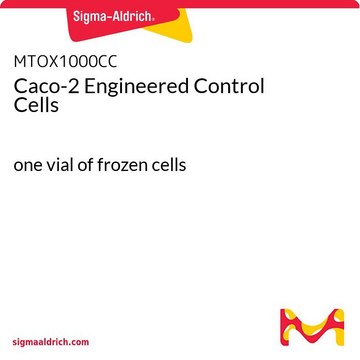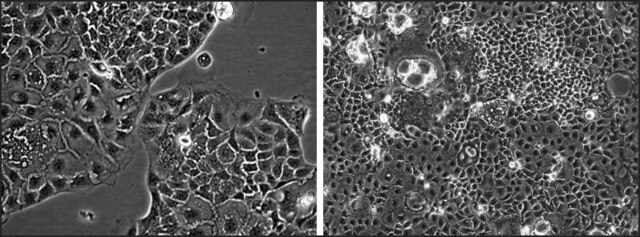09042001
CACO-2
human cervix, Epithelial
Synonym(e):
Caco-II Cells, Caco2 Cells
About This Item
Empfohlene Produkte
Produktbezeichnung
CACO-2, Caucasian colon adenocarcinoma
Biologische Quelle
human colon
Qualitätsniveau
Form
liquid
Wachstumsmodus
(Adherent)
Karyotyp
(Hypertetraploid, modal no. 96)
Morphologie
Epithelial
Produkte
Not specified
Rezeptoren
Not specified
Methode(n)
cell culture | mammalian: suitable
Relevante Krankheit(en)
cancer
Versandbedingung
dry ice
Lagertemp.
−196°C
Ursprung der Zelllinie
Beschreibung der Zelllinie
Anwendung
CACO-2 may be used as a cell model to study:
- in vitro permeability assay with various biopharmaceuticals
- in iron uptake and absorption studies
- in the cytotoxicity assay with surfactants and transporter inhibitors
- in liposome formulated drug uptake and cytotoxicity studies
Biochem./physiol. Wirkung
DNA-Profil
Amelogenin: X
CSF1PO: 11
D13S317: 11,13,14
D16S539: 12,13
D5S818: 12,13
D7S820: 11,12
THO1: 6
TPOX: 9,11
vWA: 16,18
Nährmedium
Subkultur-Routine
Sonstige Hinweise
Haftungsausschluss
Lagerklassenschlüssel
10 - Combustible liquids
WGK
WGK 3
Flammpunkt (°F)
188.6 °F - closed cup
Flammpunkt (°C)
87 °C - closed cup
Hier finden Sie alle aktuellen Versionen:
Analysenzertifikate (COA)
It looks like we've run into a problem, but you can still download Certificates of Analysis from our Dokumente section.
Wenn Sie Hilfe benötigen, wenden Sie sich bitte an Kundensupport
Besitzen Sie dieses Produkt bereits?
In der Dokumentenbibliothek finden Sie die Dokumentation zu den Produkten, die Sie kürzlich erworben haben.
Unser Team von Wissenschaftlern verfügt über Erfahrung in allen Forschungsbereichen einschließlich Life Science, Materialwissenschaften, chemischer Synthese, Chromatographie, Analytik und vielen mehr..
Setzen Sie sich mit dem technischen Dienst in Verbindung.







